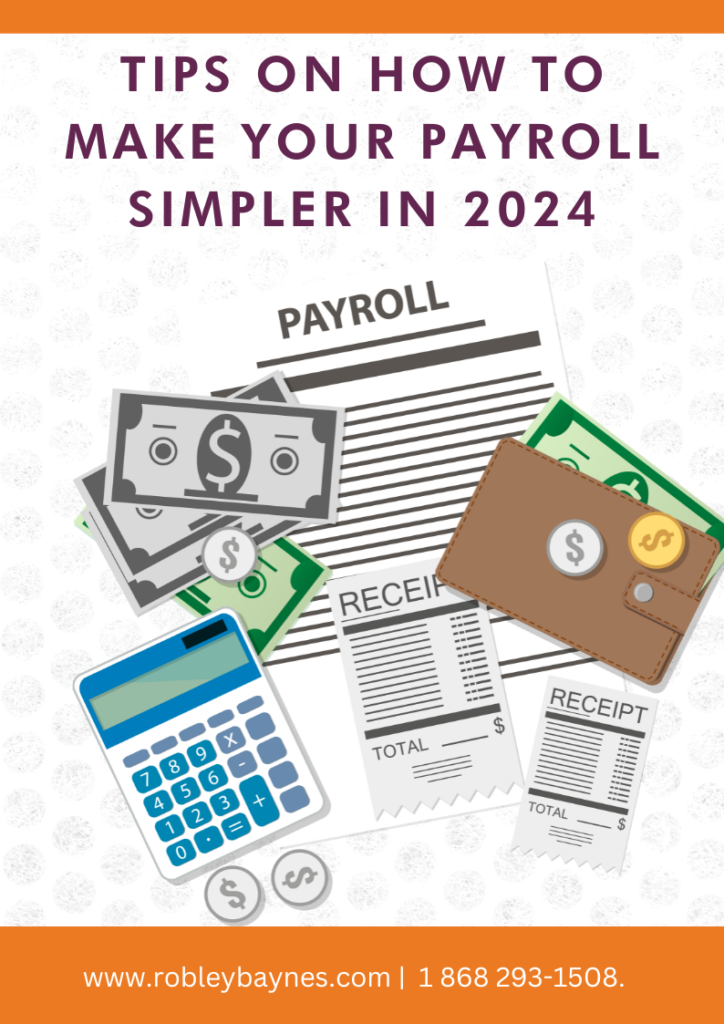
Operating a small business often involves navigating a critical, yet time-consuming element such as payroll, especially when you have employees who expect to receive their paychecks on time. Payroll essentially determines how you and your staff get paid. In this guide we’ve demonstrated strategies that can simplify your overall payroll process in the new year to come.
As a small business owner, you can streamline the efficiency of your payroll by using the following strategies we’ve provided below:
- Use of Direct Deposit/Online Banking
- Create a Payroll Calendar
- Distinguish how your employees would be paid
- Outsource a payroll professional
- Keep policies and procedures clear
- Use of Direct Bank/Online Banking
The first tip to make payroll more efficient is to make use of Direct Bank Deposit. Direct Deposit allows small businesses to send electronic payments from one bank account to another.
Banks use the Automated Clearing House (ACH) network, which lets one financial institution send payments to another.
There are several reasons to consider using Direct Deposit:
- Direct Deposits offer more convenience.
- Direct Deposits are more secure and take less time to process than cheques.
- You won’t need to print or pay to mail cheques.
- You won’t need to line up in long lines to deposit money into your employee accounts.
- Establish a Payroll Calendar And Stick To It
The second tip to make processing payroll more efficient is to establish a payroll calendar. A payroll calendar will determine how often your employees will receive payment, and it’s usually one of the first things you’ll figure out when hiring staff for your business.
There are three reasons you should establish a payroll calendar:
- A payroll calendar will help your small business meet labor market expectations.
- Establishing a payroll calendar will also help your small business determine its cash flow.
- Payroll calendars ensure your employees or workers receive payment for the required minimum of times per month.
- Distinguish how your employees would be paid
There are four payment schedules you should base your payroll calendar on. Depending on how you plan your workers work, one or more payment schedules may work for you:
- Weekly
- Biweekly/Fortnightly
- Semimonthly
- Monthly
Weekly Payroll
The first payroll calendar format can occur weekly. This will result in 52 payments to employees on the same day of each week throughout the year. You may choose a weekly payroll schedule if your small business relies on manual labor, a retail store, or a restaurant. You may also choose a weekly payroll schedule if most of your employees are hourly workers.
Biweekly/Fortnightly Payroll
The second payroll calendar format you can choose from is biweekly. This will result in employees receiving payment every two weeks. As with the weekly pay period, employees will receive payment on the same day for each payment. You may choose a biweekly payroll schedule if your small business has both hourly and salaried employees. This option can also work if employees need to take time off throughout the year.
Semimonthly Payroll
The third payroll calendar format can occur semimonthly. With this payment option, employees will receive payment twice per month or 24 times per year. Employees will receive payment either on the first and 15th of each month or the 15th and the end of the month. Semimonthly payroll payments can work for employers who would like stable payroll throughout the year. This payroll option also works best for some employees who can use a semimonthly payroll structure to plan their expenses.
Monthly Payroll
The fourth payroll calendar format you can choose from is monthly. A monthly payroll calendar is where you pay your employees at the beginning or end of every month which will result in 12 pay periods per year. A monthly payroll structure works best because it is the most affordable structure for the business. This option can also work for employees who receive payment as a commission.
- Outsource A Payroll Professional
Consider outsourcing your payroll. Robley Baynes Tax & Accounting Services offers expert payroll assistance that can help your small business save both money and time. Outsourcing payroll will also ensure you have all of your payroll needs taken care of no matter how you structure your payroll. This can also ensure you avoid making any costly payroll mistakes.
- Keep Policies Clear And Simple
The last tip to make payroll more efficient is to keep policies clear and simple. Payroll has intricacies beyond payment for your employees and workers. Businesses may have attendance, benefits, and paid vacation to work through in the middle of paying other employees.
To avoid any issues with your payroll, you’ll want to establish clear guidelines and policies. You can do this by creating a payroll policy document and updating it as needed, so your employees can access it whenever they need to.
The payroll process is one of the most vital needs of any business. For businesses of all sizes, outsourcing payroll can be beneficial. Work with Robley Baynes by contacting us today at service@robleybaynes.com or 1 868 293-1508 for help with your business’ payroll needs.
